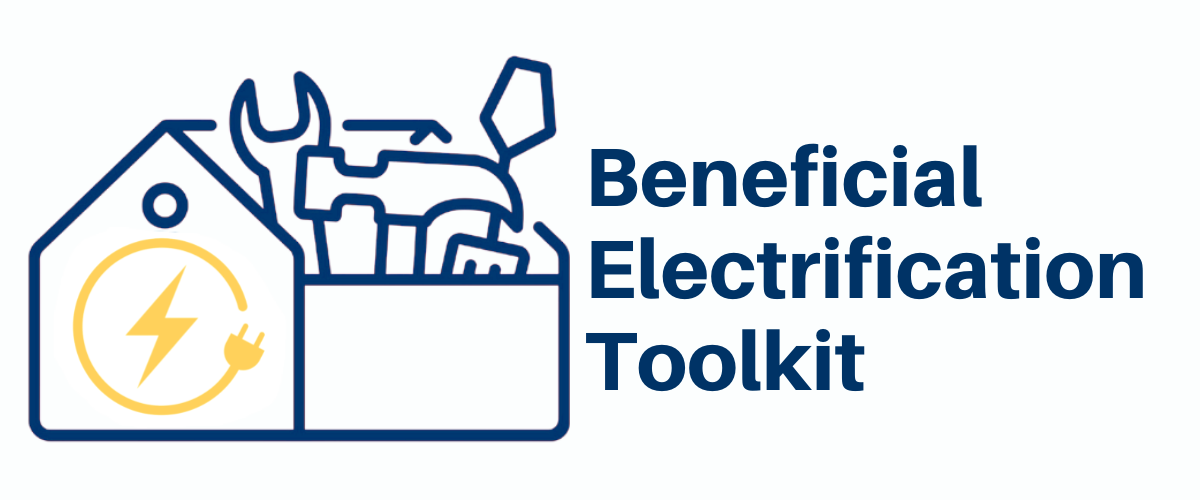
Considerations for Transportation Programs
Why It Matters
Main Info
Utility-led initiative to Track EV registrations in service territories
Some state agencies may provide EV registration data
For more detailed information some utilities offer a reward (i.e. $100) for registering their EV on the utility’s website
Also possible to explore load disaggregation tools to locate EV loads on a utility system
Develop a managed charging program to maximize economic benefits for all
EV benefits climb dramatically with managed charging
Greatest opportunity for increased flexible load
Managed charging provides utilities tools to influence charging behavior to maximize benefits to
Consumers
Utility
The grid
Goal of reducing charging during suboptimal periods (ie peak demand) while maintaining enough battery state of charge for customers to complete all vehicle trips
Two types of managed charging
Passive Managed Charging (behavioral load control) relies on customer behavior to affect charging patterns
EV varying TOU rates & hourly dynamic rates
Communication to customer to voluntarily reduce charging load (e.g. behavioral demand response event)
Incentive programs rewarding off-peak charging
Active managed charging
Direct load control via charging device
Direct load control via automaker telematics
Direct load control via AMI, a smart circuit breaker or panel
Utility-led initiative to Track EV registrations in service territories
Some state agencies may provide EV registration data
For more detailed information some utilities offer a reward (i.e. $100) for registering their EV on the utility’s website
Also possible to explore load disaggregation tools to locate EV loads on a utility system
Develop a managed charging program to maximize economic benefits for all
EV benefits climb dramatically with managed charging
Greatest opportunity for increased flexible load
Managed charging provides utilities tools to influence charging behavior to maximize benefits to
Consumers
Utility
The grid
Goal of reducing charging during suboptimal periods (ie peak demand) while maintaining enough battery state of charge for customers to complete all vehicle trips
Two types of managed charging
Passive Managed Charging (behavioral load control) relies on customer behavior to affect charging patterns
EV varying TOU rates & hourly dynamic rates
Communication to customer to voluntarily reduce charging load (e.g. behavioral demand response event)
Incentive programs rewarding off-peak charging
Active managed charging
Direct load control via charging device
Direct load control via automaker telematics
Direct load control via AMI, a smart circuit breaker or panel
Utility Managed Charging Program Creation (Utility charge control)
Prepare
1. Identify EVs in service territory using vehicle registration data or load disaggregation tools
2. Consult with utilities and groups such as Forth, SEPA, APPA for help navigating challenges or risks. Collaborate with EV industry to develop industry-wide standards for the entire ecosystem of information exchange
3. Work with these groups and utility peers to model projected EV adoption. Include aggressive cases to prepare for a potentially rapid transition to electric transportation
4. Identify available distribution capacity and potential constraints (substations, transformers, etc.)
5. Leverage data from the first step to determine where EVs are located on the distribution system to define cost-benefit of avoided distribution upgrades, which can vary significantly
6. Identify utility’s goals from the program (e.g. reduce peak demand & capacity constraints, shifting load from heavy load hours to light load hours, build resiliency of distribution system, apply downward pressure on rates, prepare for future increased intermittent generation, etc.)
7. Define business model for managed charging including costs & payback for both utility and EV drivers and establish standards to reduce costs, barriers, and complexity
Design & Implement
1. Develop a program that offers customers maximum flexibility with opt-out and override capabilities and financial benefits to increase participation
2. Identify least-cost and reliable communication systems
3. Proactively engage customers providing information on EVSE & network service providers that are managed charging capable
4. Identify resources available or needed to implement strategy (digital communications, smart meters, networked charging stations, vehicle telematics, etc.)
5. Identify metrics to measure success. How many customers are needed to make a difference with load management?
6. Identify available budget for staff management, infrastructure and marketing budget. According to SEPA, marketing budget is the number one attribute of customer enrollment.
7. Launch a pilot or full-scale program
Full Menu of TE Program Implementation Activities
Learn (education for utility staff and municipalities the utility may serve)
Visit an Electric Vehicle Showcase or Learning Center
Utility Staff EV Education & Utility or Municipality Workplace Ride and Drives
Meet EV owners: they tend to be well-informed & passionate to talk about their EV experience
Harness the energy of these groups for targeted impacts
EV owner relationships can allow for Ride and Drives to take place in areas with little to no dealer inventory
Purchase EVs for the utility
EV shopping experience is a valuable learning tool
Marketing potential of wrapped EVs positions the utility as prime source of information for customers: can showcase in newsletters, websites and at events
Utilities around the country are using EVs as loaner vehicles to customers
Personalized Ride & Drive where customers can more fully appreciate benefits and imagine an EV in their life
Great for places currently lacking dealer supply to test drive
Deepens relationship utilities have with customers
Educate (Utility-led public facing campaigns & events, fleet managers)
Outreach campaign
Organize Ride & Drive events
General public
Can integrate with a popular community event
Public can test drive in neutral setting without sales pressure
Great way to energize local auto dealers after they see benefits of the utility as a partner
Governmental & Private fleet managers
Manage (Utility led rate design)
Flexible approaches to demand charges for MHD & HD Fleets
Electric options for medium and heavy-duty vehicles have increased dramatically over the past few years. Demand charges can be a significant barrier. Some utilities are adjusting rate structures that will make investments in EVs more cost-effective for commercial and municipal operations. Reduced demand charges can sometimes be justified by the increased revenue generated by electricity sales to these fleets; through higher per-kwh rates; by the benefits from battery storage for frequency and voltage control, or alleviating distribution constraints.
Southern California Edison has addressed this by adjusting rate structures. They have created TOU rate classes for 0-20kW, 20-500kW and above 500kW. Super off-peak rates at night allow a fleet user to charge without demand charges at a reduced rate. Using battery storage to buffer charge rates is also becoming more cost effective.
Flexibility around demand charges for DC fast charging stations
DCFC stations can have very high, but short term, peak loads. Until there are larger numbers of electric vehicles on the road, these demand charges make up a disproportionate share of DCFC costs.
Pacific Power (PAC) found many DCFCs spending > 80% monthly costs on demand charges. Especially in rural areas, these costs are untenable. Pacific Power has responded by proposing a 10-year phase in for demand charges, with higher kWh costs that gradually decline over that period. Many other utilities and jurisdictions have completely waived demand charges for DCFC, recognizing that fast chargers are essential to serve an EV market that overall provides substantial ratepayer benefits. Utilities may also consider piloting new types of rate structures which would seek to better reflect the growth and behavior or EV charging.
EV specific rate structures to incentivize off peak / optimally timed charging to grow benefits for all
Utility-led Charging, Infrastructure: Build It and They Will Come (Residential, Workplace, Multi Family etc)
Direct investment in public charging infrastructure
Public highway and tourism charging infrastructure
Utility or municipal fleet charging
Residential charging support
Workplace charging support
Multi-Family charging support
Utility-led EV Promotion (dealer engagement, car sharing, elderly shuttles etc)
Working with dealers to improve engagement around EVs
Promoting EV ride & car sharing and other solutions for elderly or low-Income residents
Promoting EVs along with clean energy
Rebates for new and used EVs and E-Bikes
The Utility as an influencer of Electric Vehicle policy
Nonprofits like Forth & EESI have a lot of expertise in this important area
Subsection
Text
Text
EM&V
Considerations for Buildings Programs

